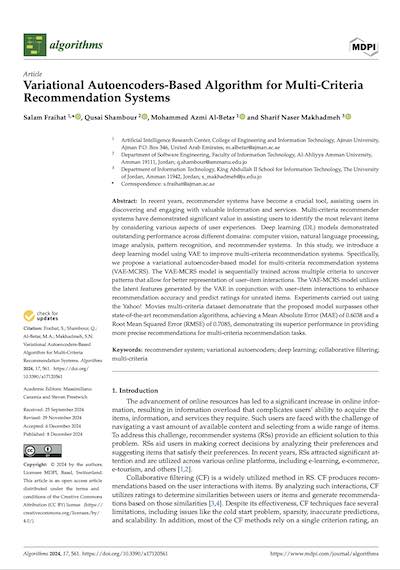Today's article comes from the journal of Algorithms. The authors are Fraihat et al., from Ajman University, in the United Arab Emirates. In this paper they pull back on the curtain on one of the most powerful ways to build a recommendation engine.
DOI: 10.3390/a17120561


You must be an active Journal Club member to access this content. If you're already a member, click the blue button to login. If you're not a member yet, click the sign-up button to get started.
Login to My Account
Sign Up